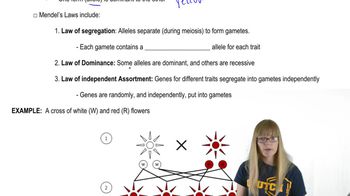Here are the essential concepts you must grasp in order to answer the question correctly.
Hereditary Conditions
Hereditary conditions are genetic disorders that are passed down from parents to offspring through genes. These conditions can be caused by mutations in a single gene (monogenic), multiple genes (polygenic), or chromosomal abnormalities. Understanding the specific condition's inheritance pattern, such as autosomal dominant or recessive, is crucial for predicting outcomes and treatment responses.
Recommended video:
RUSP (Recommended Uniform Screening Panel)
The RUSP is a list of genetic and metabolic conditions that newborns are screened for in the United States. It aims to identify conditions that can benefit from early detection and intervention, improving health outcomes. Familiarity with the RUSP helps in understanding which conditions are prioritized for screening and the potential treatments available.
Recommended video:
Treatment Outcomes
Treatment outcomes refer to the expected results of medical interventions for specific hereditary conditions. These outcomes can vary widely depending on the condition, the timing of treatment, and the type of intervention used. Evaluating anticipated outcomes is essential for assessing the effectiveness of treatments and making informed decisions about patient care.
Recommended video:




